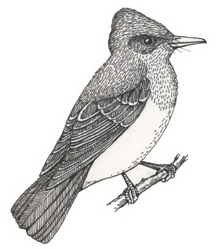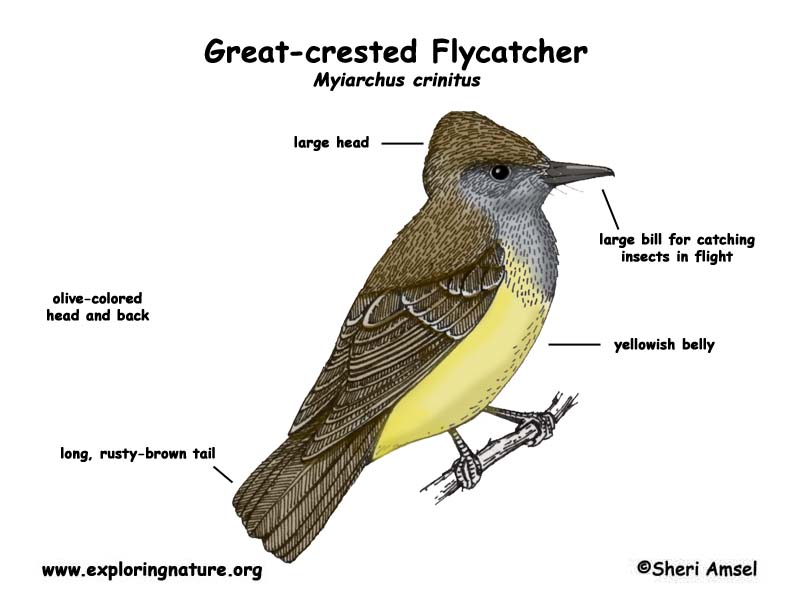

They breed from southern Canada to the Gulf coast. They spend the winters in southern Florida and the tropics.
They are found in deciduous and mixed woods.
They have an olive-colored head and back, a yellowish belly and a long rusty-brown tail. They have a large head and bill made for catching insects.
They perch on a tree branch or wire and watch for insects. When they see one, they fly out and grab it right out of the air.
They eat insects.
They nest in tree holes and bird boxes. They make a large nest of grass and line it with anything they can find, like string, plastic and fabric bits. Females lay 5 or 6 white eggs with spots.
Kingdom: Animalia
Phylum: Chordata
Subphylum: Vetebrata
Class: Aves
Order: Piciformes
Family: Tyrannidae
Genus: Myiarchus
Species: M. crinitus
When you research information you must cite the reference. Citing for websites is different from citing from books, magazines and periodicals. The style of citing shown here is from the MLA Style Citations (Modern Language Association).
When citing a WEBSITE the general format is as follows.
Author Last Name, First Name(s). "Title: Subtitle of Part of Web Page, if appropriate." Title: Subtitle: Section of Page if appropriate. Sponsoring/Publishing Agency, If Given. Additional significant descriptive information. Date of Electronic Publication or other Date, such as Last Updated. Day Month Year of access < URL >.
Amsel, Sheri. "Flycatcher (Great-crested)" Exploring Nature Educational Resource ©2005-2024. December 14, 2024
< http://www.exploringnature.org/db/view/188 >

